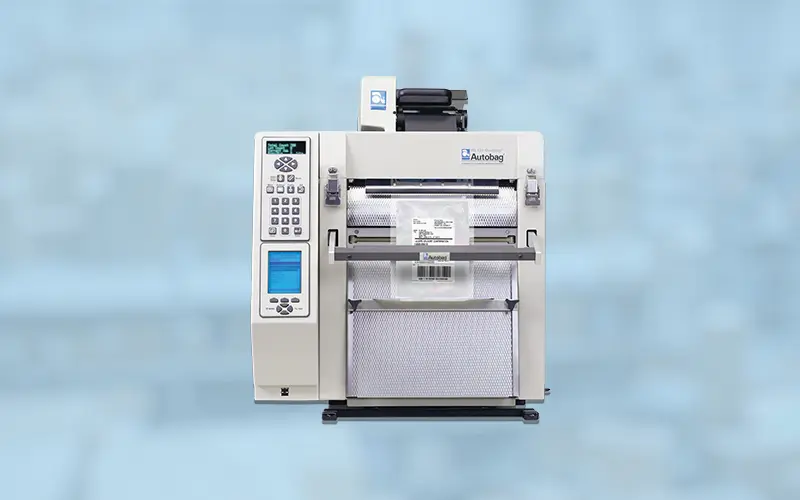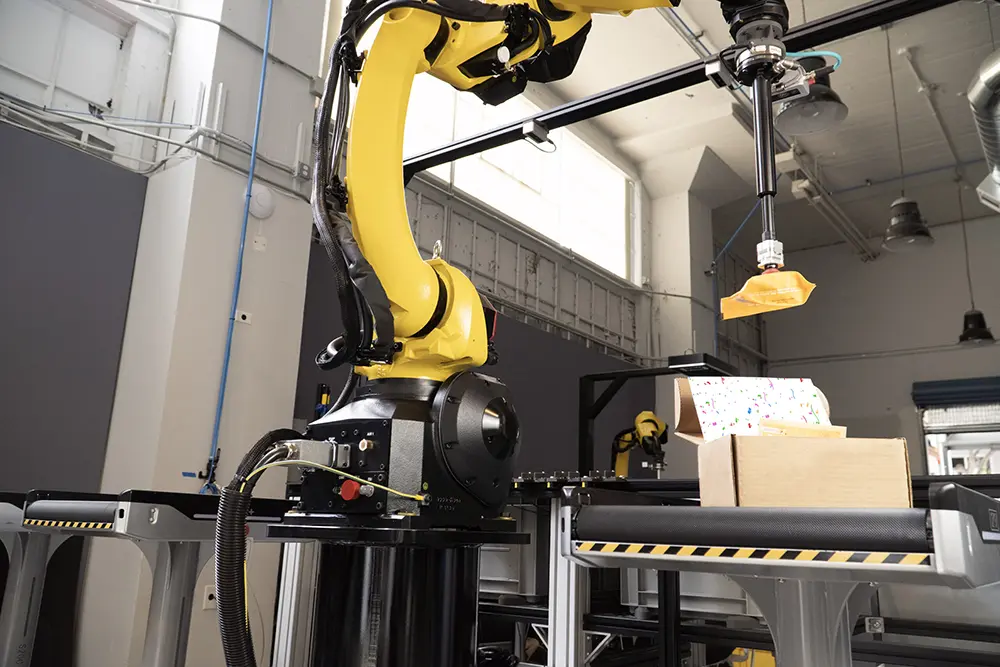
A bagging machine or bagging system can save warehouse operations significant money by automating the packaging process. This can be especially important in e-commerce fulfillment for soft goods and other products with multiple dimensions.
Bagging machines feature small footprints that fit into existing shipping environments and many have a next-bag-out printer to eliminate the need for a separate labeling operation. These features increase packaging productivity and accuracy in mail order ecommerce, catalog orders and prescription-by-mail applications.
What is a Bagging Machine?
A bagging machine is a piece of equipment used to fill and seal bags with products. Bagging machines are typically used in warehouses and distribution centers to package goods for shipping. There are many different types of bagging machines available, each with its own set of features and capabilities.
Some of the most common types of bagging machines include:
- Vertical form, fill, and seal (VFFS) machines: VFFS machines are the most common type of bagging machine. They are used to fill and seal bags vertically. VFFS machines can be used to package a wide variety of products, including food, beverages, and consumer goods.
- Horizontal form, fill, and seal (HFFS) machines: HFFS machines are less common than VFFS machines. They are used to fill and seal bags horizontally. HFFS machines are typically used to package large, bulky items, such as furniture and appliances.
- Pillow bag machines: Pillow bag machines are used to fill and seal pillow-shaped bags. Pillow bag machines are typically used to package food products, such as chips and snacks.
- Stick pack machines: Stick pack machines are used to fill and seal stick packs. Stick packs are narrow, tubular bags that are typically used to package single-serving products, such as juice and water.
Bagging machines can be either manual or automatic. Manual bagging machines require operators to manually load products into the machine and to seal the bags. Automatic bagging machines can load and seal bags automatically. Automatic bagging machines are typically used in high-volume operations.
Bagging machines can be a valuable asset for businesses of all sizes. They can help to improve efficiency, accuracy, and productivity. Bagging machines can also help to reduce labor costs and to improve product quality.
Cost-Effectiveness
The cost savings a bagging system can provide are significant. Bagging machines can help reduce shipping costs by reducing the weight of packages, and they can also cut down on packaging waste. Plus, using bags instead of boxes can significantly cut down on labor expenses.
Adding an automatic bagging system can also increase overall fulfillment productivity and efficiency. By eliminating the need for workers to bag products by hand, you can save on labor and shipping costs, while cutting down on errors.
A new system pairing OSARO’s pick-and-place robotics with SEE bagging equipment streamlines logistics at a warehouse or direct-to-consumer e-commerce fulfillment center. The solution is a drop-in upgrade that can handle a wide range of fulfillment orders, reducing the need for rework, increasing speed, and improving throughput.

Using a Bagging Machine to Speed Up Fulfillment
The faster your bagging system is, the more efficiently you can pack items and materials into bags for shipping. This is especially important for distribution operations that must keep up with e-commerce orders and seasonal spikes in sales demand.
To boost packaging speeds, consider using a net weigher scale to pre-weigh product in the bagging hopper. This allows you to fill and seal more packages per minute without having to move and scan each item between a Gaylord and the bagging machine.
Another way to improve speed is by implementing an OSARO robotic bagging system. OSARO’s pick-and-place robots enable fast and flexible automation in fulfillment centers and direct-to-consumer e-commerce sites. The OSARO robotic bagging system offers a high-performance combination of object recognition and manipulation capabilities that augment bagging productivity in a wide range of logistics applications. This results in a highly-flexible automated packing solution that can be networked for full pack station integration and central monitoring.
Accuracy
Boost productivity and reduce labor costs by automating your packaging process. A quality bagging machine can increase accuracy and precision while freeing up your human workforce to perform more rewarding tasks.
Your industrial bagging machine should be able to withstand the rigors of your production line without compromising safety and hygiene. Evaluate the safety standards of each potential manufacturer and look for models that can meet or exceed those requirements.
A good bagging system should allow you to choose the right size of bags for your products. Several sizes are available, from small sachets to large poly bags. In addition, some baggers offer a choice of different sealing devices. For example, you may need to use a heat-sealing sealer for delicate products or a vacuum-seal system for heavier items. Some baggers also come with a label-side-up exit conveyor that makes it easier for your employees to scan barcodes. A bagging machine that can handle a variety of materials is an invaluable tool for your e-commerce fulfillment business.
Efficiency
Purchasing an industrial bagging machine can significantly increase production capacity and reduce human error. Depending on your business model, you may also be able to redeploy employees to other tasks, reducing overhead costs.
Evaluate your industry’s packaging requirements carefully when selecting a bagging system. For example, food manufacturers are required to meet stringent hygienic standards that can lead to hefty fines and shutdowns. A quality bagging system can ensure your products comply with strict regulations, minimizing the risk of product recalls.
A bagging system can dispense precise amounts of materials into each bag, helping to prevent waste and adhere to specific weight or volume requirements. It can also print and apply a label to each bag, eliminating the need for a separate printing operation.















